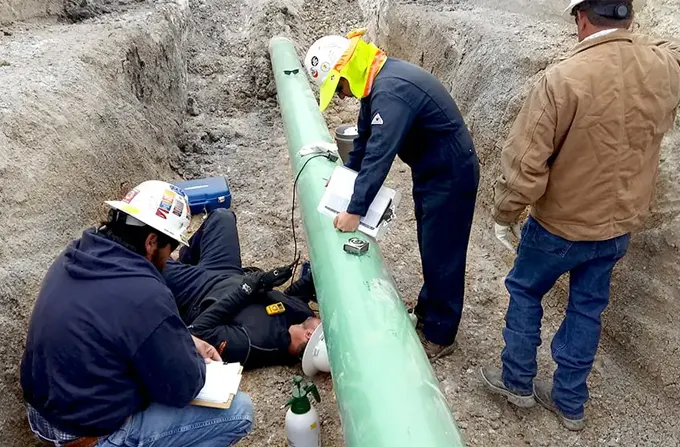Sensorlink deliver high resolution corrosion and erosion monitoring systems. The main objective of Sensorlink is to provide products which allow its customers to meet the demands of the modern oil and gas industry.
Corrosion and erosion is a major cost in the oil and gas and associated industries, and recurrently the reason for accidents and unplanned interruptions.
SensorLink’sUltraMonit® and Swarm® systems monitor corrosion directly at the location where it is installed, without disturbing flow conditions or causing deposits, which may compromise intrusive monitoring measurements. Sensorlink’s solutions can be installed at any location along a pipeline; subsea and above water, underground or above ground on land-based lines, as well as upstream production sites and refineries (also high temperature locations).


All Sensorlink’s corrosion and erosion monitoring systems are based on the well-established ultrasonic pulse-echo method. Special processing methods have been developed for such instrumentation that is fixed to the pipeline, giving high resolution and accuracy measurements for monitoring wall loss.
In the oil and gas sector corrosion and erosion are serious problems. Internal corrosion in pipelines in the oil and gas industry is generally caused by water, carbon dioxide (CO2) and hydrogen sulfide (H2S). Corrosion can also be aggravated by microbiological activity. Erosion is generally caused by particles in the flow causing wear and tear on the inner pipe-wall. This internal corrosion and erosion needs to be controlled and monitored. Sensorlink provides tools that will be useful in these operations.
The Sensorlink technology is capable of measuring changes in the wall thickness with greater accuracy, thus avoiding the uncertainty caused by inadequate instruments or unskilled operators. Wall thickness can be measured to a very high accuracy by repeating measurements at the same spot over time with permanently installed instrumentation.

AMOGH Consultants is managed and controlled through a Board of Directors chaired by the Chairman. Functionally, the international management of the group is controlled by the Directors through their designated areas of responsibility and with the support of its supervisory Board.